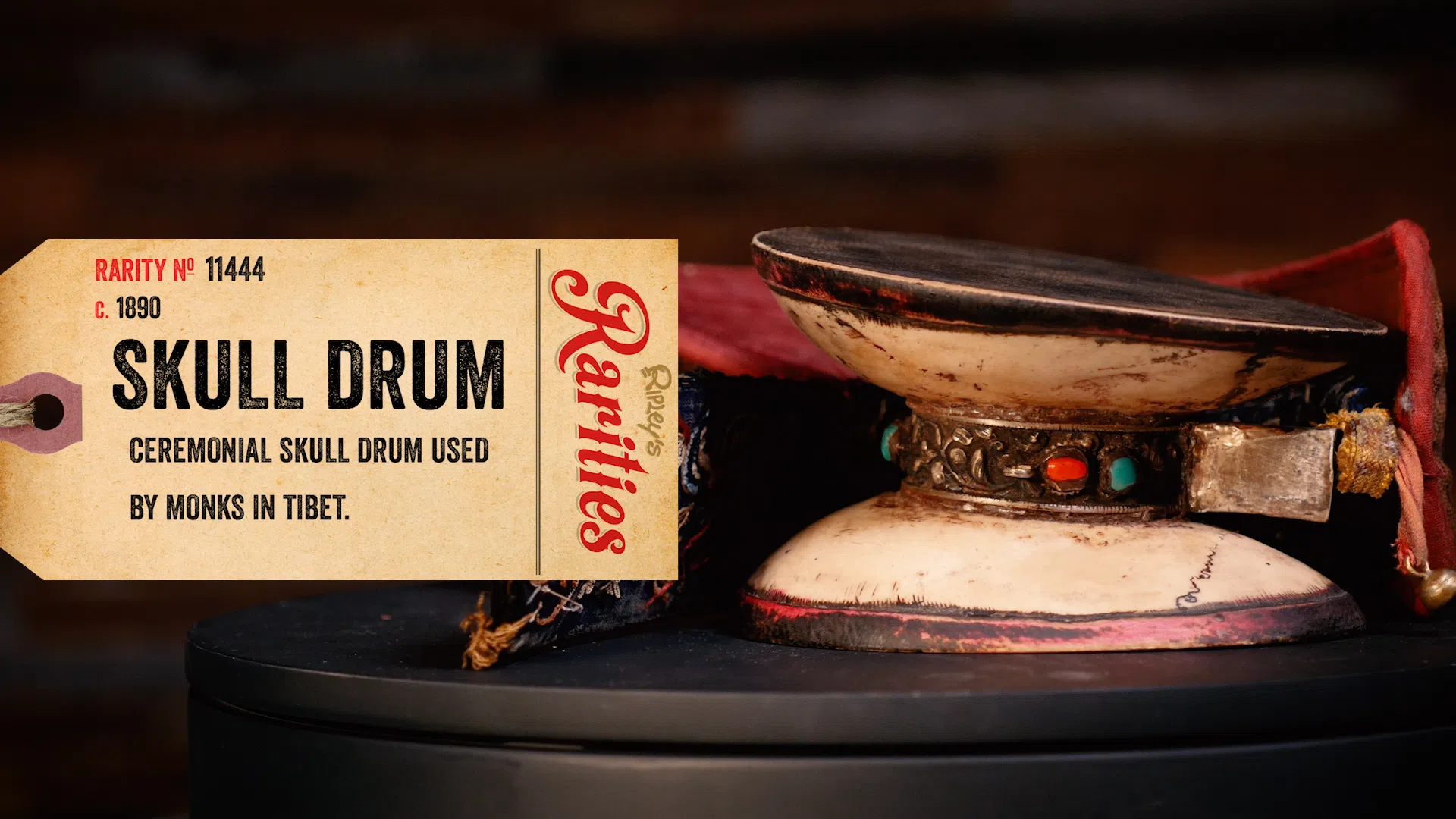
Skull Drum From The Mountains Of Tibet
Featured in Ripley's Believe It or Not!

Skull Drum
A relic of monastic rituals in the mountains of Tibet, this skull drum is made from the tops of human heads. Called a damaru, these double-headed drums were used in a variety of mantric ceremonies, but were not always made from bone. Typical damaru were made from wood or metal, with bone being a rarity.



